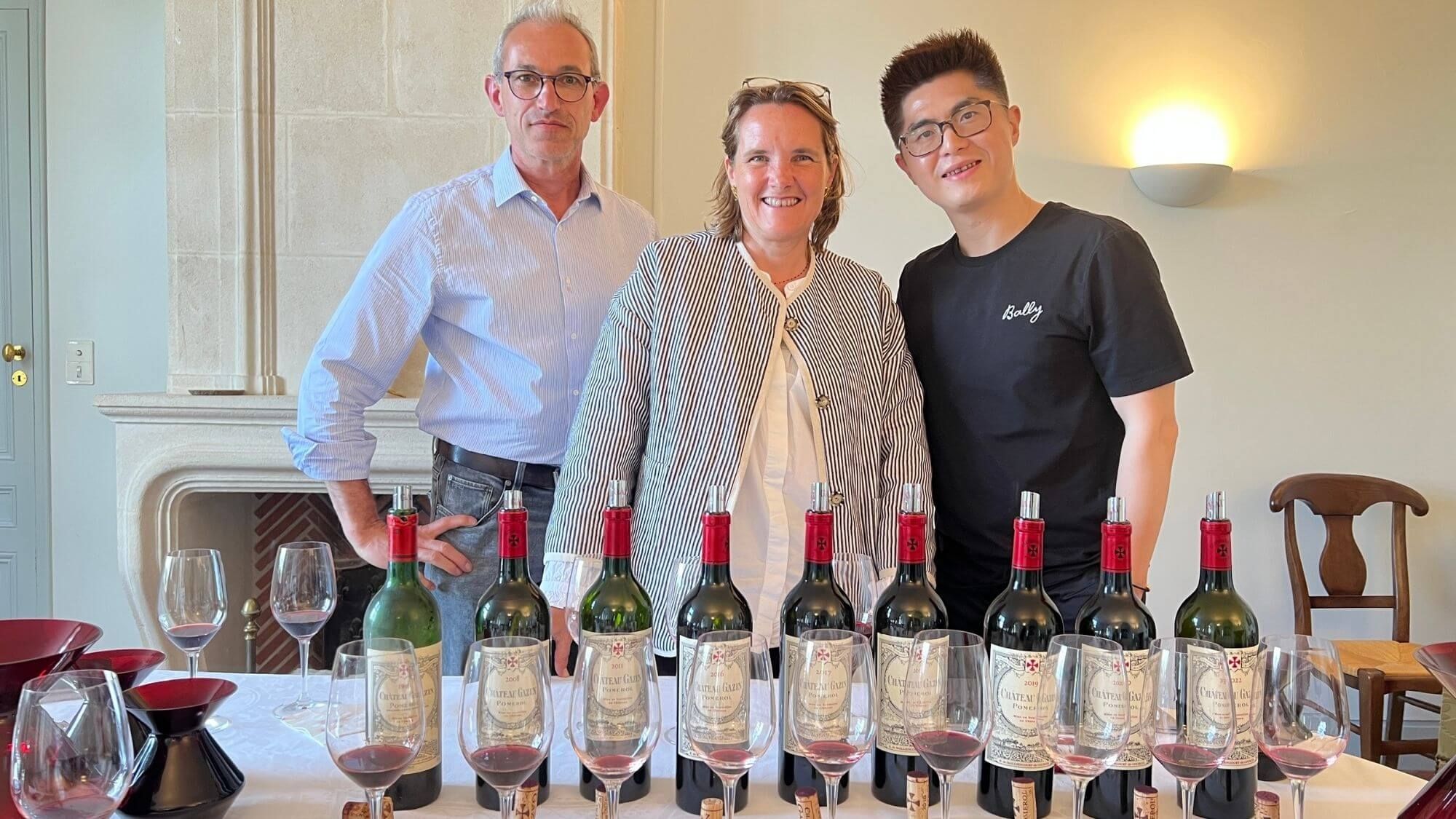AMA Vertical Tasting
Château Gazin
(1989-2022)
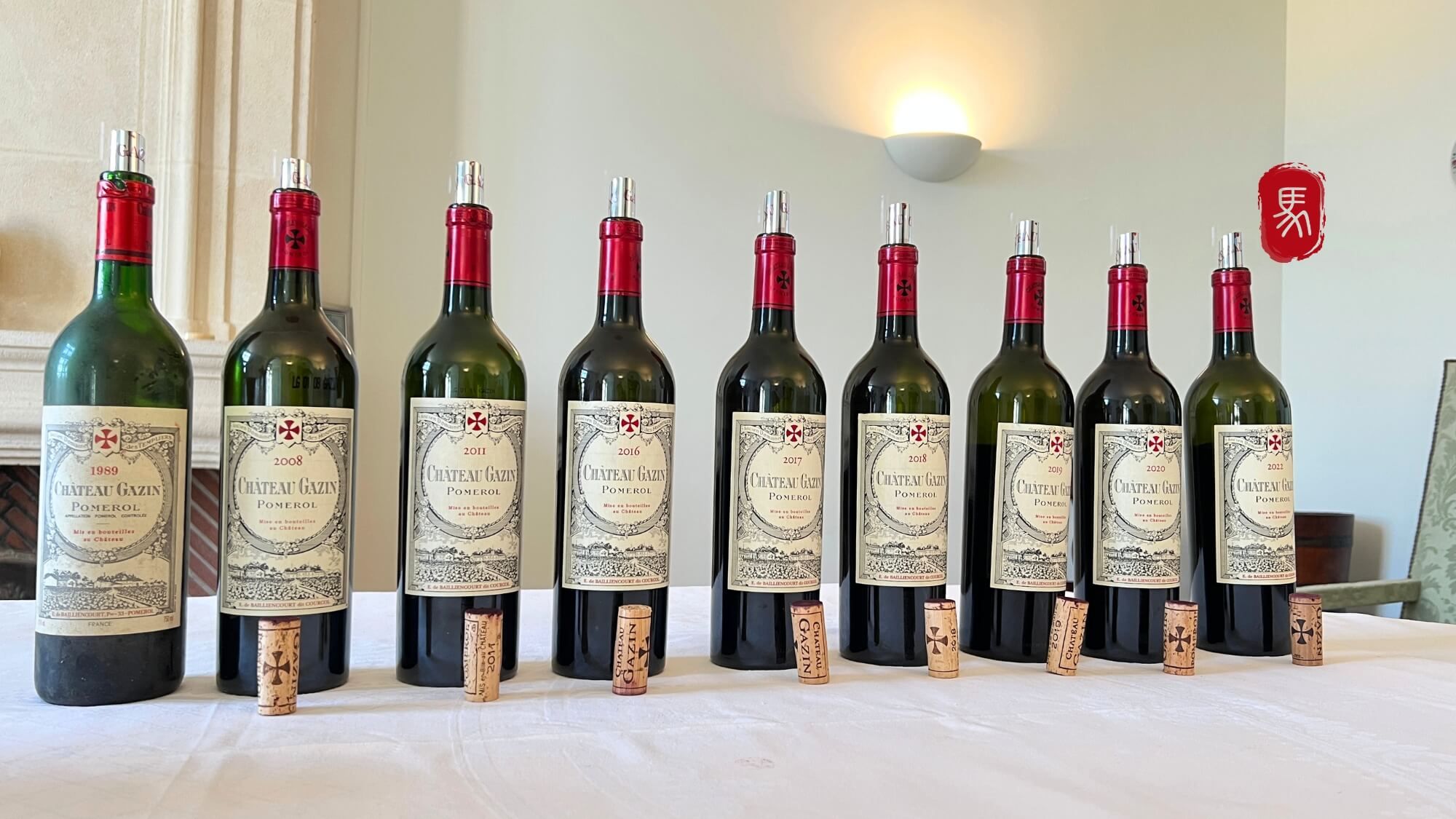
On July 27, 1214, on the plains of Bouvines near Lille in northern France, King Philippe II Auguste personally led some 6,000 troops into a decisive battle against a coalition army of 9,000 men under Holy Roman Emperor Otto IV. The clash was ferocious. Otto’s heavy cavalry launched a fierce assault on the French right flank, nearly shattering the line. Amid the chaos, the king himself, positioned at the center of the army, was struck down by an enemy lance and thrown from his horse.
Yet he swiftly mounted the steed of a loyal aide and charged back into the fray, rallying his men to fight to the last. The French forces gradually regained composure, turned the tide, and launched a powerful counterattack that crushed the overconfident Otto IV. Four high-ranking nobles, including the Count of Flanders, were captured on the field.
The Battle of Bouvines not only reversed France’s faltering fortunes in the early years of the Hundred Years’ War but also reshaped the trajectory of the French nation for centuries to come, firmly establishing its dominance in Western Europe.
Otto IV, on the other hand, was forced to abdicate in disgrace the following year. The prestige of the Holy Roman Empire never fully recovered.
As for that luckless ally of Otto’s, the English king John, known to history as “John Lackland”, he fled Aquitaine for England the moment he heard of the defeat. Under pressure from his barons, he would soon be compelled to sign the Magna Carta, laying the groundwork for Britain’s future as a constitutional monarchy.
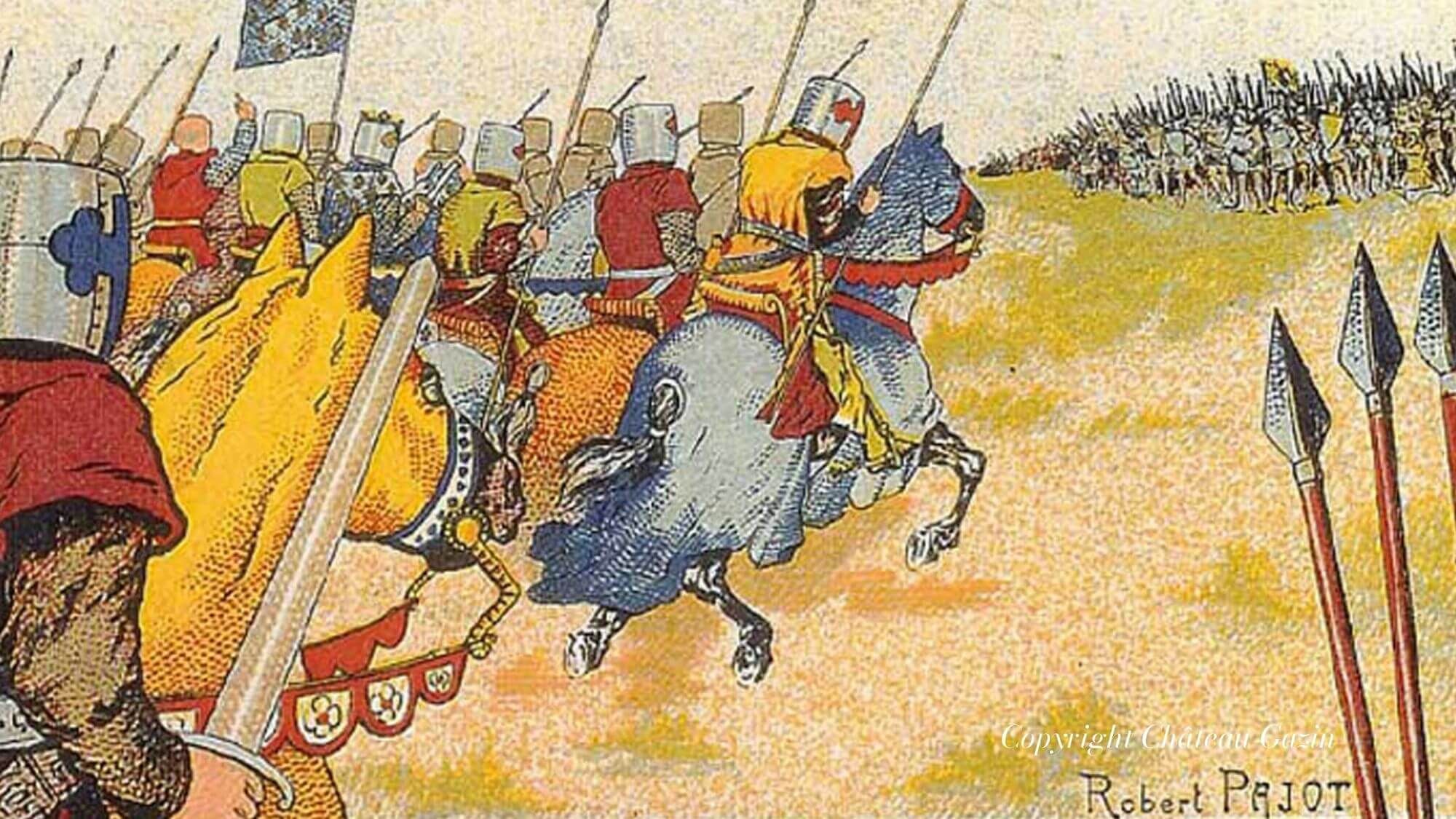
In this battle that would decide the fate of nations, a short-necked warrior distinguished himself with extraordinary valor. For his bravery, King Philippe personally bestowed upon him the name “Courcol” (meaning “short neck” in French). In honor of this moment of glory, the warrior added “Courcol” to his family name, becoming “de Bailliencourt dit Courcol.”
Eight hundred years later, the descendants of this “short-necked” hero have chosen a different way to uphold the family’s honor. No longer wielding swords or charging into battle, they have instead poured their loyalty and dedication into each bottle of Château Gazin – allowing us, with every sip, to taste a legacy forged across centuries.
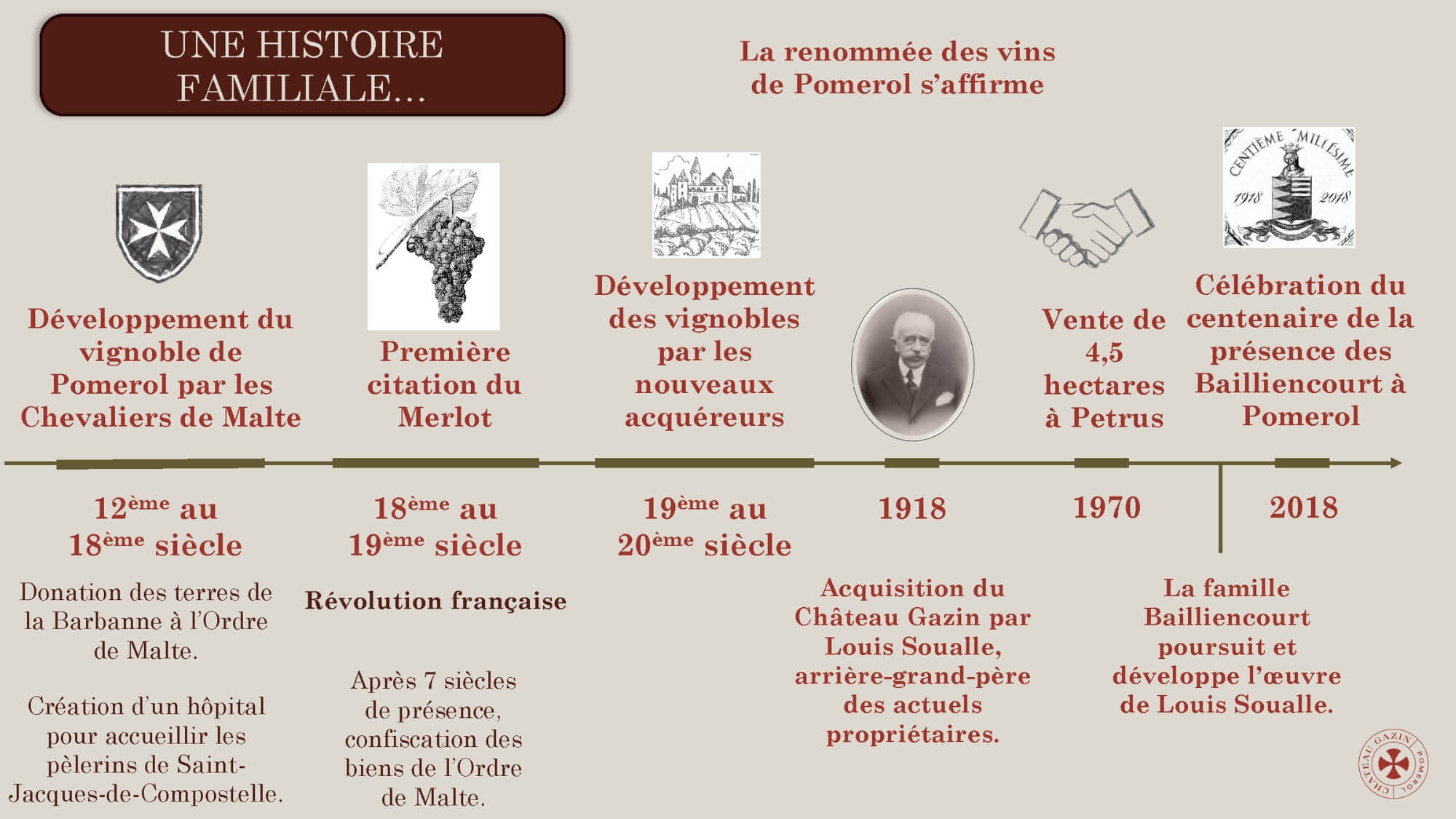
My encounter with Château Gazin began thanks to the UGCB (Vintage Bordeaux in China). More than a decade ago, I tasted it for the first time and was immediately struck by its full-bodied richness and firm tannins. But it wasn’t until the 2023 Fête de Printemps de Pomerol that I truly felt the power behind its noble soul.
That evening, a bottle of Château Gazin 2010 stunned everyone at the table with its commanding presence. The concentration, shaped by its gravel and blue clay soils, felt like a titanium spine. Swirling the glass released layer upon layer of black truffle aromas, rich and expansive, releasing an aura that gently echoed the presence of Petrus. Even now, the memory still stirs me.
Speaking of terroir, Château Gazin is likely a familiar name to many students of WSET Level 3 in China. Why? Because in the official WSET presentation slides, when introducing the soils of Bordeaux’s Right Bank, it is Château Gazin’s vineyard profile that’s used as the example. If you’ve seen that photo before, it might already feel strikingly familiar.

So now, let me take you deeper into the terroir of Château Gazin.
Château Gazin owns 24 hectares of vineyards—an outright titan in the relatively compact Pomerol appellation. Of this, 19 hectares are located on the plateau, with the remaining 5 hectares extending along the slopes.
Broadly speaking, the estate’s vineyards can be divided into three main sections:
The first lies near the southern part of the estate, in the heart of the appellation, where the soils are composed entirely of the famed blue clay. This is prime territory for top-quality Merlot. The soil here is virtually identical to that of the legendary Petrus. Thanks to this terroir, Château Gazin can display a tannic structure as fine and compact as metallic powder, underpinned by a backbone reminiscent of titanium alloy.
The second section sits in the central part of the estate, where gravel and clay dominate. This area gives the wines a soft, ripe texture and a generous, full-bodied character. As winemaker Michel explained to me, with global temperatures on the rise, Merlot from this zone is occasionally prone to over-ripening. To adapt, they’ve planted a higher proportion of later-ripening varieties such as Cabernet Sauvignon and Cabernet Franc.
The third section lies toward the northern edge of the vineyard, where sandy soils intermingle with gravel. Grapes from this area tend to produce wines that are supple and charming, but they lack the structure typical of Pomerol, and are thus mainly used for the estate’s second wine.
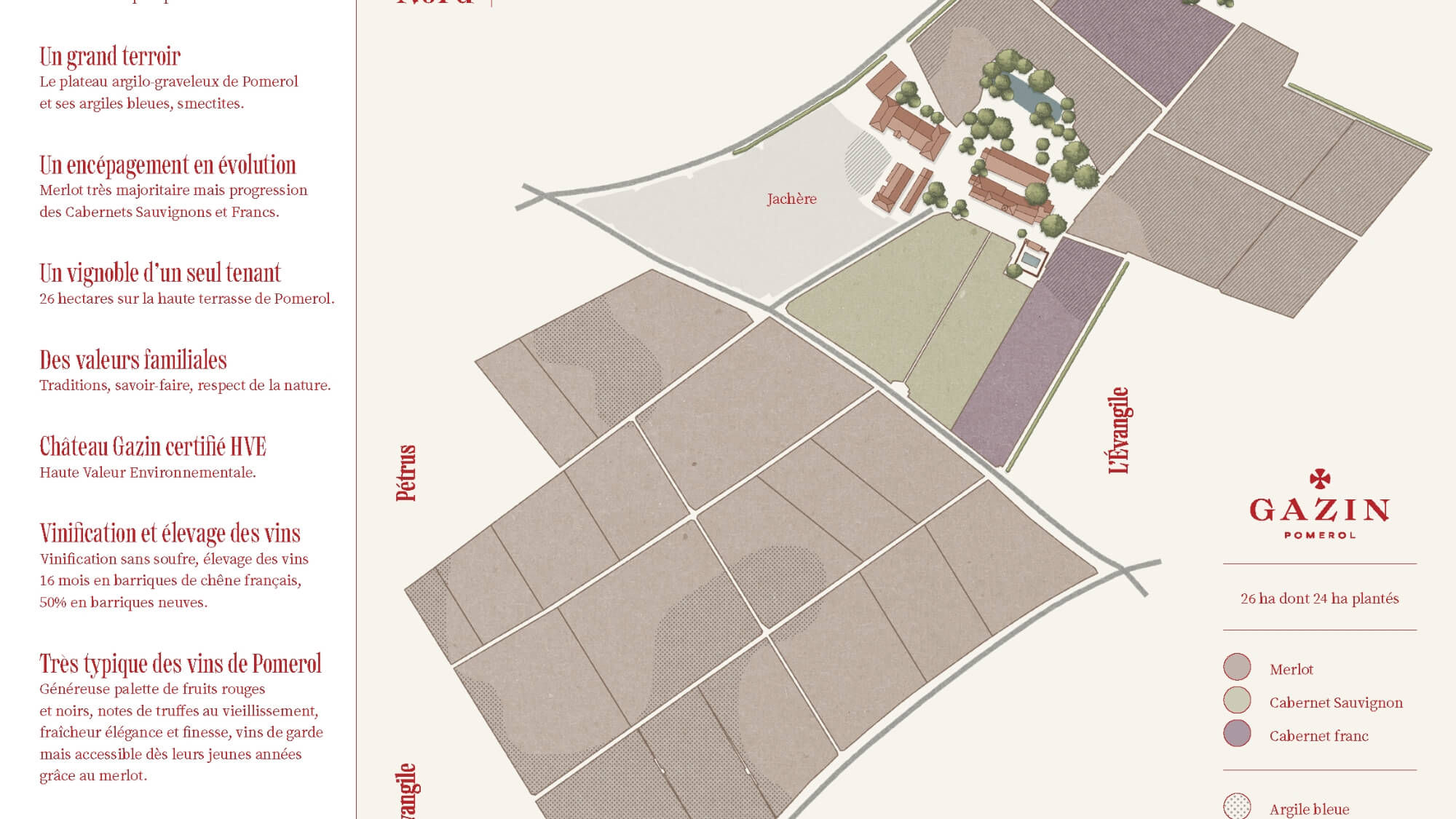
Earlier I mentioned Petrus-a name familiar to all. But what few people know is that some exceptional plots in the Petrus vineyard once belonged to Château Gazin.
Let’s go back to 1970. At the time, the third generation of the family had just taken over the estate and was confronted with a daunting challenge: how to pay the enormous inheritance tax. One branch of the family, which had inherited Château de la Dominique, was unable to raise the funds and was ultimately forced to sell the property to the Fayat family, magnates in the French construction industry.
But Étienne de Bailliencourt, who inherited Château Gazin, was determined to keep the estate in the family, no matter the cost.

In a last resort, he turned to Jean-Pierre Moueix, the patriarch behind Petrus. To secure the funds needed for the tax, he agreed to sell 4.5 hectares of Gazin’s vineyard. It was a heavy sacrifice, but it enabled the De Bailliencourt family to preserve ownership of Château Gazin. Thanks to that decision, the estate remains under the family’s stewardship to this day, its legacy still intact a century later.
Let’s bring our attention back to the present. Both in the vineyard and in the cellar, Château Gazin has implemented a number of noteworthy practices that set it apart.
First, their approach to vineyard selection deserves mention. To ensure that each vine reaches its ideal stage of ripeness, the team carefully marks grapes of varying maturity within the same plot and harvests them in separate passes. After picking, the grapes are chilled before undergoing cold maceration.

What’s particularly remarkable is that Château Gazin has, for years, practiced sulfur-free fermentation while also insisting on the use of native yeasts. When I first heard of this approach, I was genuinely surprised. The combination of wild yeasts and sulfur-free fermentation is usually a recipe for microbial trouble, often calling to mind the unpredictable world of so-called “natural wines.” Yet in all the vintages I’ve tasted over the years, I have never encountered issues with “Brett” or runaway volatile acidity. How do they manage it?
As I learned from a conversation with winemaker Mickaël Obert, the secret lies in their careful preparation. Before the main harvest begins, the team picks a small batch of grapes to run trial fermentations. The native yeasts that prove stable and active in these tests are then preserved and gradually introduced into each fermentation tank during the full harvest. In this way, the estate captures the unique expression of wild yeasts while avoiding the technical pitfalls so often associated with natural winemaking. It’s a testament to the precision and control that top Bordeaux estates can apply, even when working with wild yeast.
In terms of oak usage, the estate has also made some adjustments in recent years. The proportion of new barrels is now kept around 50%, while the total aging period remains approximately 16 months. The overall winemaking style remains rooted in tradition, yet every step is now subject to more meticulous quality control and refinement.
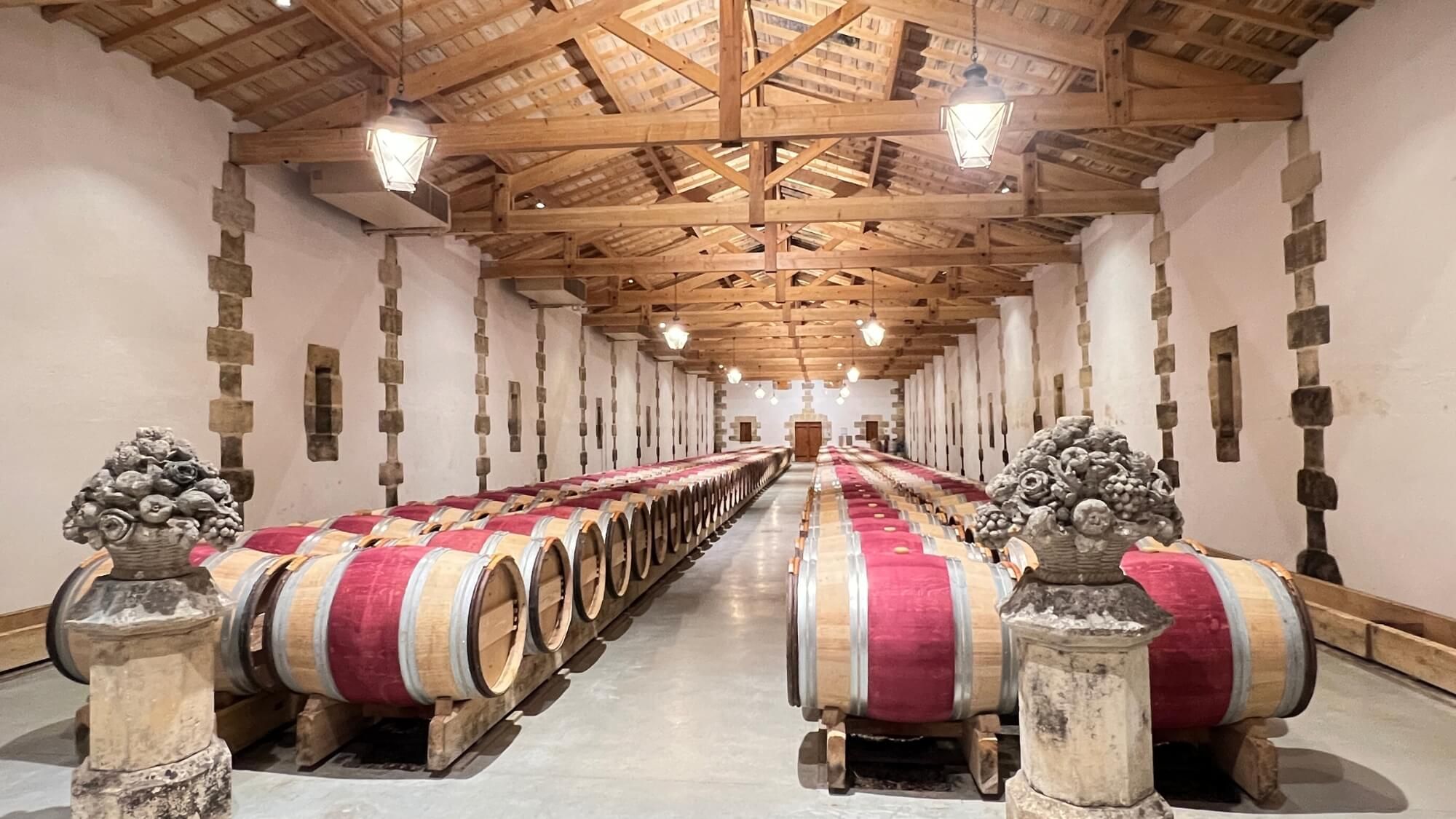
My views
From this vertical tasting, Château Gazin emerges as a Merlot sheathed in armor, and a textbook expression of traditional Pomerol.
It threads the restrained composure of blue clay with the vibrant warmth of its early-ripening soils, crafting a structure both commanding and emotionally resonant.
With age, this duality grows ever more distinct, and at times, a faint silhouette of Pétrus seems to flicker through. In certain hot and dry vintages, particularly during the first three years after bottling, I often find its tannins slightly angular, such was the case with 2022 and 2019. Yet in other hot vintages like 2016 and 2020, it unfolded its full potential early on, etching power and character into every stroke with precision. That’s why I often say: “Château Gazin is like an enigma,” one that requires time and patience to truly understand.
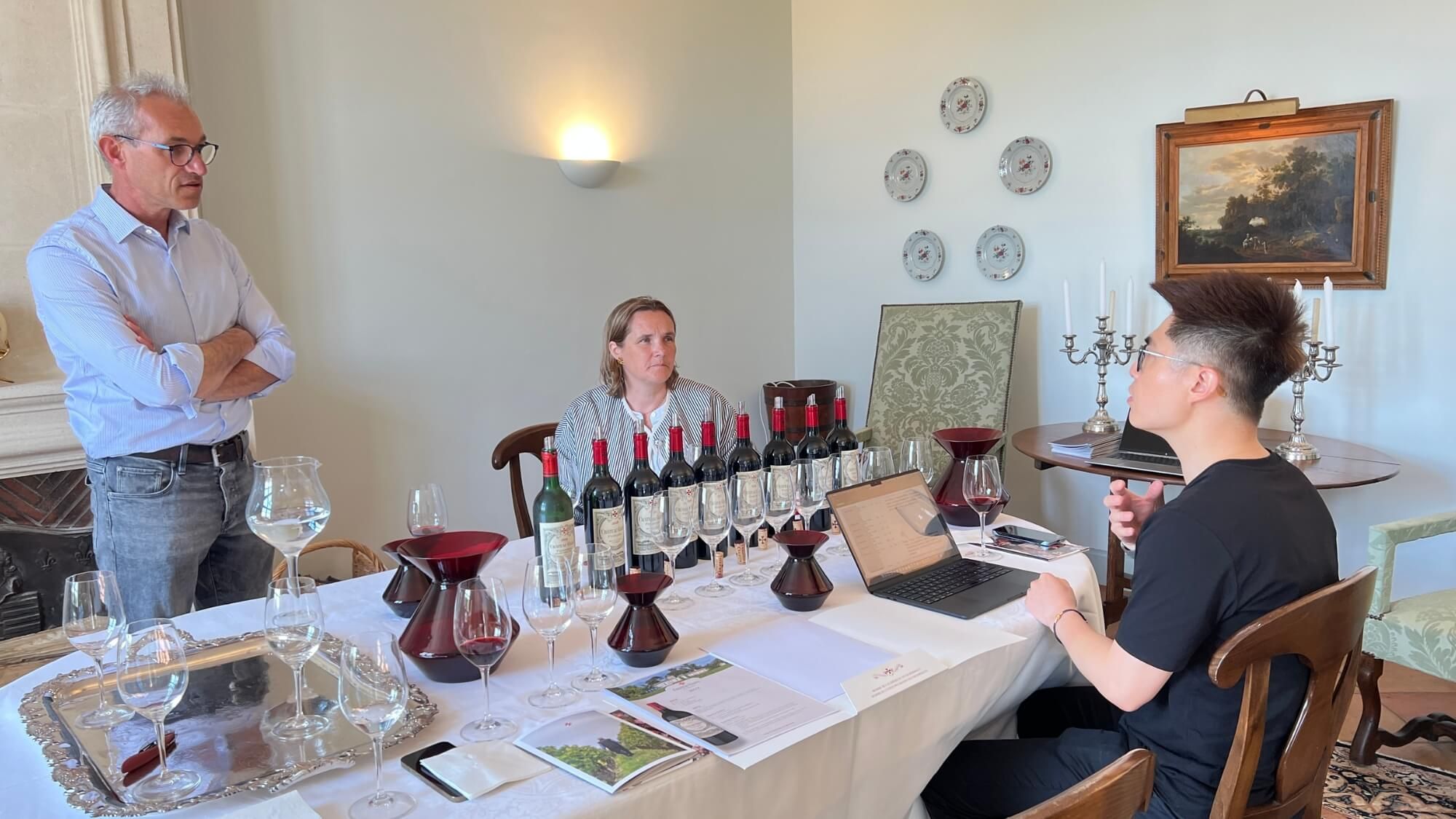
During the vertical tasting, I also came across a lesser-known secret about Château Gazin.
Historical records show that from the 12th century until the French Revolution, much of the viticulture in the Pomerol region was overseen by the Knights Hospitaller. (also known as the Order of St. John of Jerusalem, of Rhodes, and of Malta) The very site where Château Gazin now stands was, in the 18th century, part of a small village. It is quite likely that it was built on the grounds of the former l’Hospital de Pomeyrols, an outpost established by the knights to host pilgrims en route to Santiago de Compostela.
I hope this article has brought Château Gazin to life for you, with richer color and deeper dimension.
So next time you raise your glass, take a moment to imagine the ancestor who fought so valiantly at the Battle of Bouvines, or the knights from centuries past sharing wine and conversation on this very land. I believe you’ll sense, in that single glass, a depth of history and warmth of spirit that belong to Château Gazin alone.
